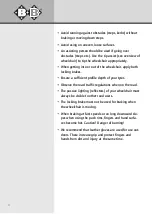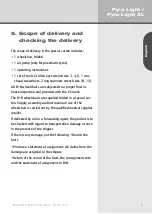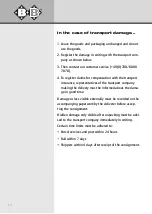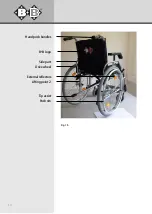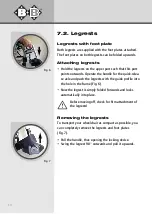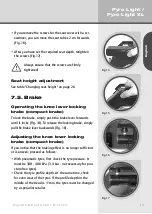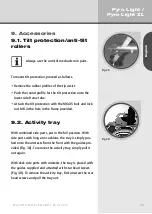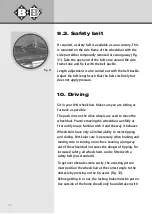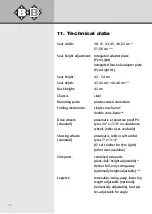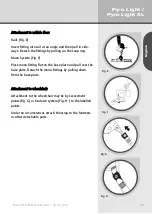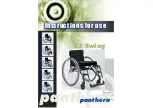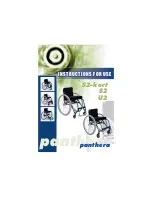
20
To ensure optimum braking function, the pneu-
matic tyres must take pressures of 300 - 400 kPa
(3-4 bar)! Not adhering to the required tyre pres-
sure can lead to loss of braking efficiency!
The compact brakes only operate on one driving
wheel each!
Ensure that both drive wheels have the same tyre
pressure with pneumatic tyres to achieve good
directional stability!
After completion of the setting process, retighten
the loosened bolts and test the brakes!
In general!
As the brakes are one of the most important items of
safety equipment on your wheelchair, the wish for a servi-
ce braking system for the accompanying person can be
fulfilled with the optional drum brake. As well as its use
as a locking brake for the wheelchair, the drum brake can
be used for braking while moving.
As the drum brake uses a brake shoe that is not applied
to the tyres but to the brake drum in the wheel hub, this
braking system is largely independent of the tyre state
(air pressure) and thus significantly safer. (Drum brake:
see options)
Fig. 18
Fig. 19
Fig. 20
• Now check the adjustment of the brake. This must be
set such that the gap between the tyre tread and the
braking bolt with the brake open is 15 mm (Fig.19). The
braking bolt must be horizontal, i.e. parallel to the gro-
und surface.
• After unscrewing the two rounded head bolts with 5
mm Allen head on the brake mounting (Fig. 20), you
can position the brake correctly.

